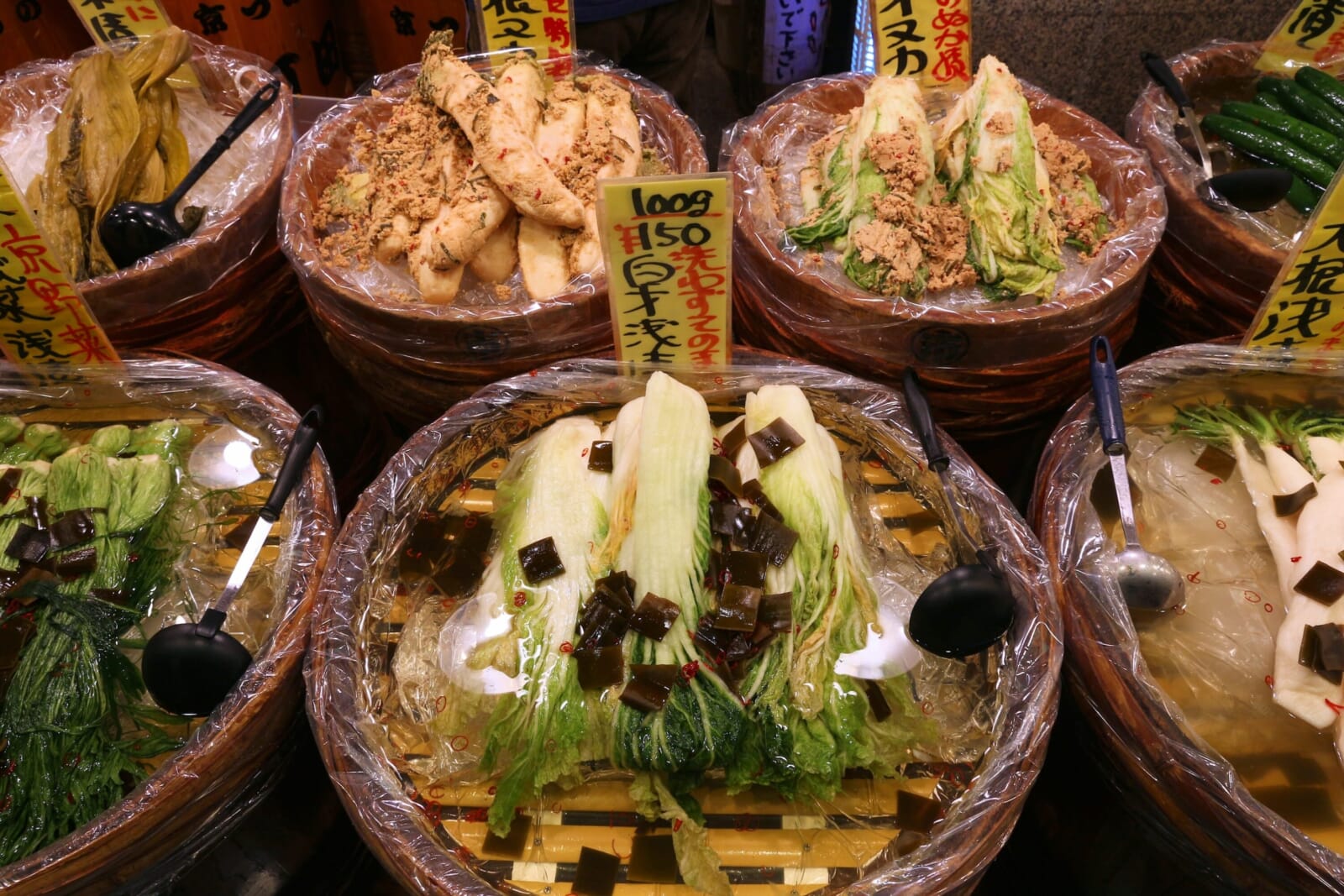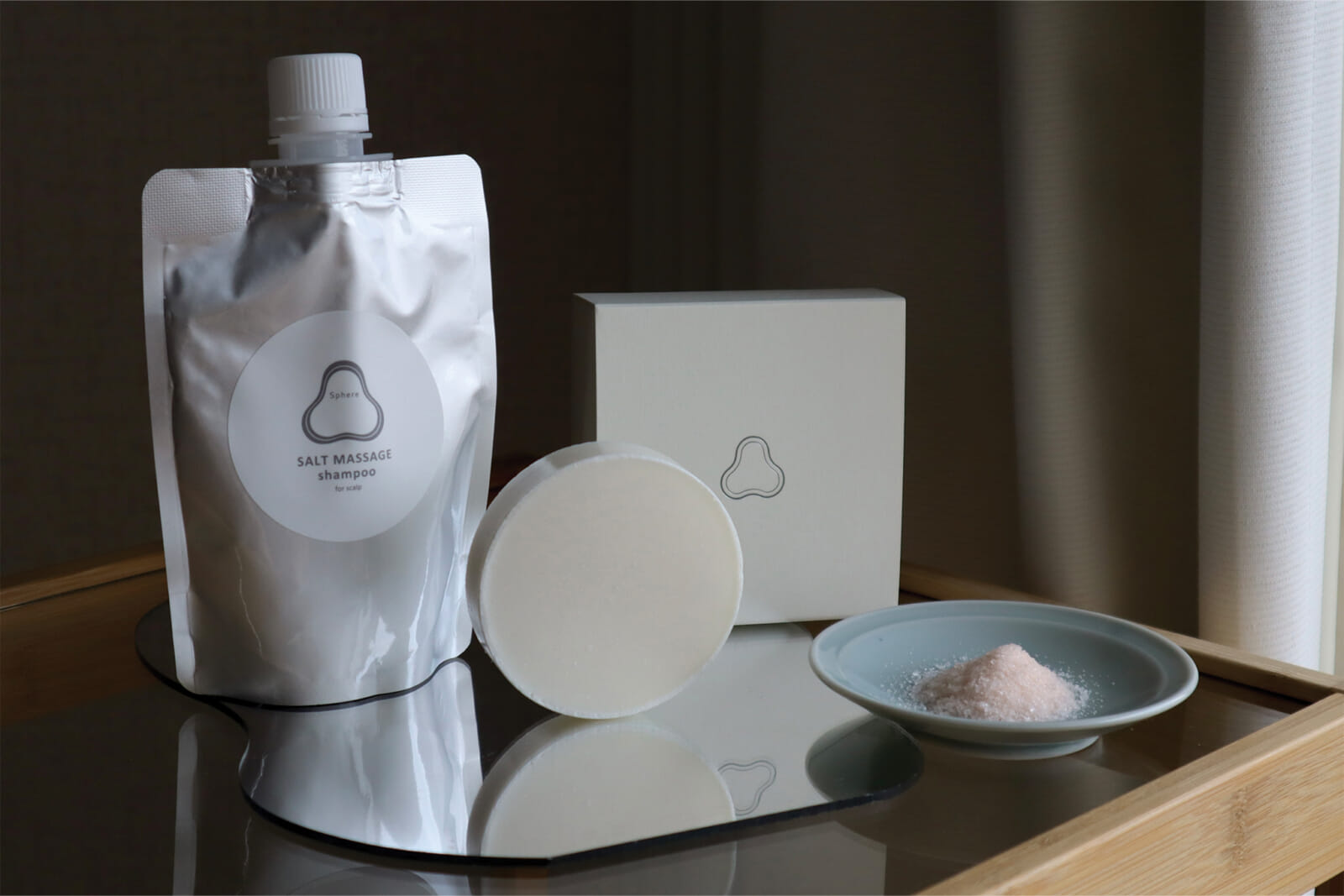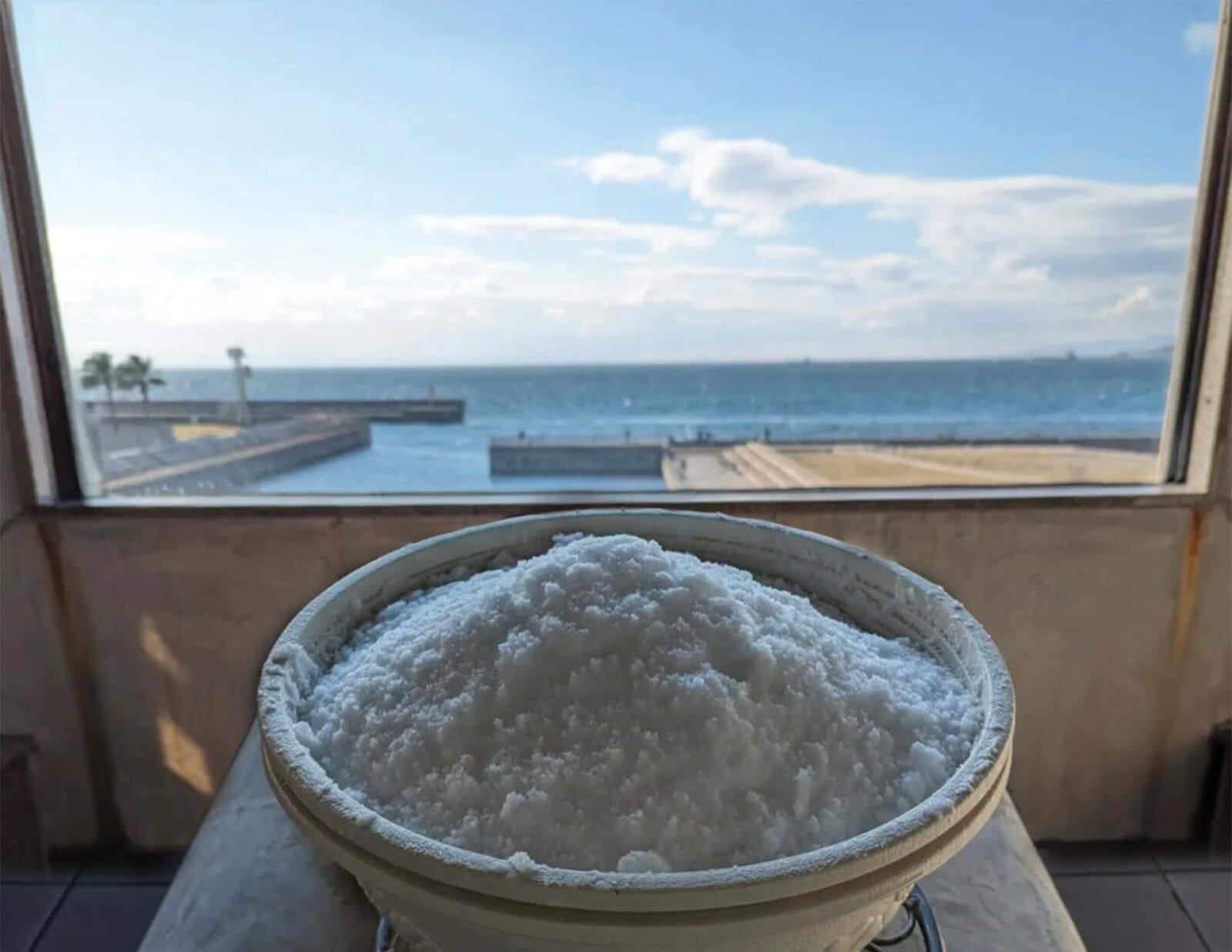It’s well-known that salt enhances flavors and amplifies the umami in almost every dish. However, salt’s importance extends beyond cooking; it holds cultural significance and provides health benefits due to its rich mineral composition. The importance of salt is so great that it has even sparked conflicts and wars throughout history.
Japan, lacking natural deposits of rock salt or salt lakes, has turned to the sea for its salt — a challenging endeavor given the low salt concentration in seawater and the country’s humid climate, which slows down water evaporation. Over many centuries, various methods have emerged for salt extraction, with one of the earliest techniques being moshio-yaki, which dates back to the Kofun period (circa 250–552 CE).
While there are slightly varying descriptions of the moshio-yaki method, it typically involves pouring seawater over sun-dried seaweed to create a concentrated brine, which is then boiled down in earthenware pots. Over time, various regions developed alternative methods to extract salt from seawater, although all were labor-intensive and time-consuming. Even with advancements in technology that allowed for less manual labor in salt production, many regions in Japan continue to practice traditional methods, where the core principles of extracting salt from seawater and seaweed have remained consistent over the centuries.
Today, Japan is said to produce over 4,000 different types of salt, each varying in size, color, flavor, and aroma. Read on to discover some of the ways this cherished mineral plays a role in modern Japan.

Artisanal Salt Produced with Ancient Techniques
In 2012, a group of retirees in the Kudaraura area of Oda city, Shimane Prefecture, initiated a project to harvest salt using the traditional moshio-yaki technique. They used locally sourced arame seaweed, seawater, and a flat-bottomed pot to create Kudaraura Moshio, a sea salt rich in magnesium and calcium. To make their variety of moshioThis group of salt artisans is not alone in their traditional practices; they are just one of many organizations contributing to Japan’s vast array of salts. Some of these salts can be found at Solco, a quaint artisanal store located in Togoshi Ginza. The shop features over 40 varieties of salt sourced from various prefectures in Japan and beyond, including Kudaraura Moshio (designated as “023” on the Solco website).
Another traditionally made salt worth trying is the charmingly named Katsuura-en Shingetsu no Kirameki (“new moon sparkle salt from Katsuura”). Harvested from the waters off the coast of Katsuura in Chiba Prefecture, this salt is collected during high tides on full moon and new moon days, yielding a product with a lower magnesium and higher calcium content. Taste-wise, it has a soft yet rich umami that pairs excellently with light dishes such as fish.
You could easily spend an entire afternoon exploring the unique stories of Solco’s salts, each bottle designed to complement different foods. If you’re in search of the perfect salt for a specific dish, the knowledgeable staff at Solco are more than happy to offer recommendations.


Salt in Traditional Japanese Cuisine
No discussion of umami is complete without considering how salt is woven into Japan’s culinary practices, often transcending mere seasoning. Salt has been used for food preservation and fermentation since the Jomon period (10,000–300 BCE), with popular preserved and fermented foods such as tsukemono (pickled vegetables), himono (dried fish or shellfish), and miso.
Tsukemono, which is usually served as a side dish, is a versatile staple in the Japanese diet. You’ll often find tsukemono added to ramen and curry for a burst of texture and flavor or alongside a simple bowl of rice to enhance its taste. One of the most common types is shiozuke, where vegetables such as cabbage, cucumber, daikon, carrot, or ume (Japanese plum) are pickled in a salt brine. This process not only preserves the vegetables but also enriches and intensifies their umami flavor.
Himono, a popular dish and regional delicacy, can be prepared in a variety of ways. One common method involves salting or brining fish—often sliced lengthwise—before drying it. This salting and drying process transforms the fish’s proteins, yielding a firmer texture while enhancing its umami taste.
Miso, one of Japan’s most prominent fermented foods, also relies on salt, which is added after steamed soybeans are mixed with koji from rice, barley, or soybeans. The mixture is fermented in a warm environment for six months or more. The result is a rich, delicious paste that offers a salty, smooth, deep umami flavor, perfect for soups, dressings, and marinades.


Salt-Infused Beauty Products
High in minerals, sea salt is a popular ingredient in Japanese beauty products. From shampoos to face washes to bath salts, there is no shortage of salt-infused self-care items in Japan.
Recently, I’ve added Soratochi’s Sphere Salt Massage Shampoo For Scalp to my hair care routine. This shampoo consists of 60% organic sea salt and is enriched with ginseng, mulberry root, ginger, tea leaves, and humus extract.
The visible salt granules mix into the thick paste that releases a slightly minty aroma. (The scent is a blend of various oils, including grapefruit peel, orange peel, rose geranium, peppermint, Japanese peppermint, juniper, and eucalyptus leaf.) For an exfoliating experience, apply the paste directly to your scalp and scrub gently. You’ll feel the scrub lift away buildup while stimulating blood flow to your scalp. On days when you prefer not to exfoliate, simply lather the product with your regular shampoo for a rich, luxurious foam. I assure you, your hair will be voluminous the next day!


The Salt Sauna Experience
Japan’s first sauna was established in Ginza in 1957 during the Showa era, and over the years, saunas have gained popularity, especially following the TV show Sado, which showcases various saunas throughout Japan. Salt saunas are particularly favored for their detoxifying, deodorizing, and skin-enhancing benefits. The combination of sweat and salt is believed to help eliminate dead skin cells and regulate skin turnover, thanks to the salt’s ability to dissolve protein and draw out sebum, dirt, and subcutaneous fat deep within the pores. While standard sauna temperatures range from 80 to 90 degrees Celsius, a salt sauna features high humidity and lower temperatures, typically between 50 and 60 degrees Celsius.
For those considering a visit to a salt sauna, here’s what to expect: After using the sauna’s amenities, you will enter the salt sauna room containing a large bowl of salt. Take a handful and gently pat it onto your skin. Avoid rubbing, as the salt isn’t meant for scrubbing or exfoliating. As you relax, the salt will gradually dissolve, becoming transparent in about five to 15 minutes. Afterward, step out of the sauna to rinse off the salt in the shower. While a cold plunge is recommended after your sauna session, it’s entirely your choice.



